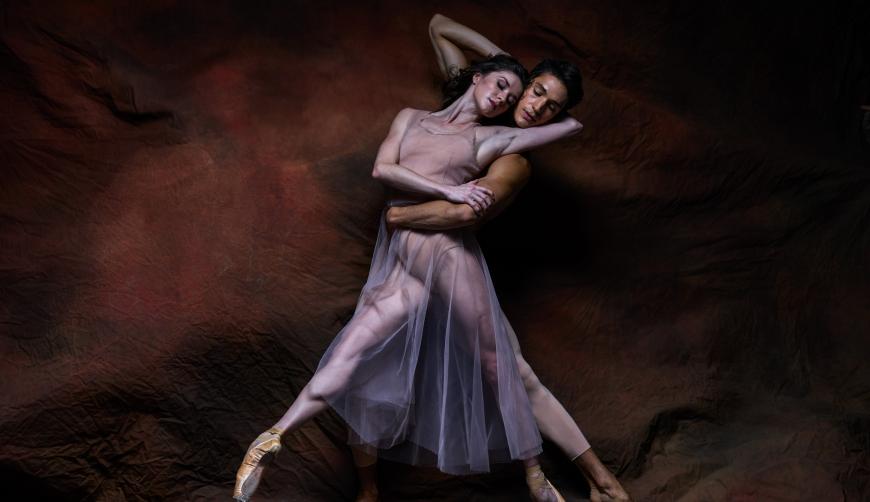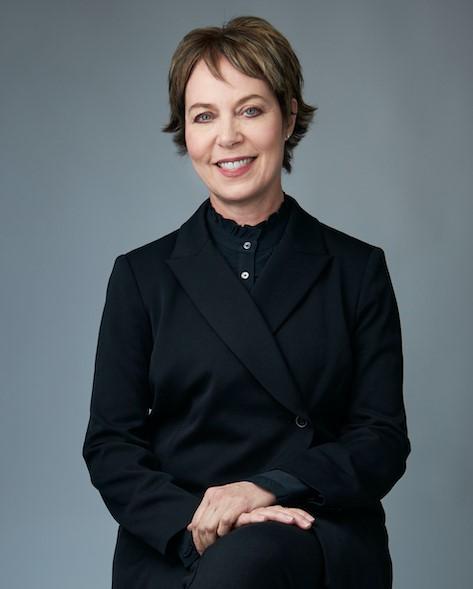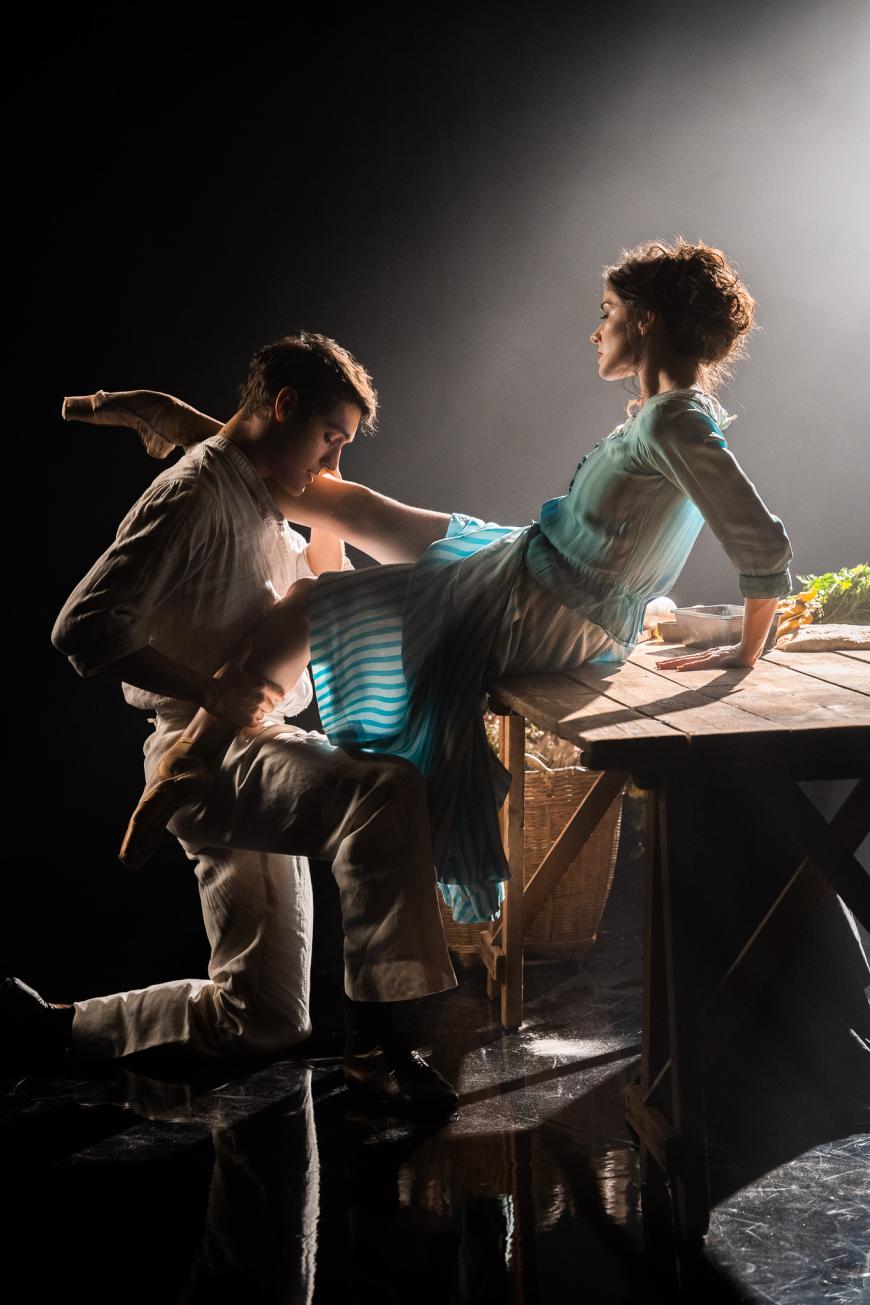
Having danced with American Ballet Theatre for 22 years, and with teaching and coaching experience in both the academic and ballet worlds, Susan Jaffe was appointed artistic director of the storied company last year. Succeeding Kevin McKenzie, who stepped down at the end of 2022 after a 30-year tenure, Jaffe has been ensconced in her new role for only three months.
A decided highlight of this, her first season, is the North American premiere of Christopher Wheeldon’s full-length ballet Like Water for Chocolate. Landing at Segerstrom Center for the Arts for six performances March 29 – April 2, the ballet features an original score by longtime Wheeldon collaborator Joby Talbot (impressively conducted by Alondra de la Parra, who served as music consultant) and was commissioned by the Segerstrom Center and The Royal Ballet. And while the work, based on the book by Mexican novelist Laura Esquivel — it was also made into a film by Alfonso Arau in 1992 — may be the product of McKenzie’s leadership, Jaffe is as thrilled about seeing it in Orange County (it premiered last year in London) as she is about her ABT directorship.

“For me,” explained Jaffe, who was born in 1962, “being able to basically come home and coach and direct this company is actually a dream come true; it feels like a calling. It’s a lot of work, but it’s also what I love to do. I think anybody taking over as artistic director of a ballet company these days — it’s a challenging job, but we love this art form. It was challenging when we were dancers, and it’s going to remain a challenge to direct. But I do think that there are so many people that love ballet, that come to ballet, and bringing them our classics and our new works is something that is hugely satisfying.”
Indeed, regarding Chocolate, The Guardian’s Lyndsey Winship wrote that the “solidity of the production and the imagination of Esquivel’s world keep this ballet an engrossing, propulsive, fulfilling watch.” And Jaffe knows a thing or two about story ballets, having danced in many, including Swan Lake, Giselle, and Romeo and Juliet, during her illustrious career.
“This ballet is, first of all, very complex in its choreography,” explained Jaffe, “and choreography has evolved so much since Swan Lake, which remains one of the hardest [ballets] in the world. But the choreography of today has more complexity of movement, more detail. It’s not the sort of larger, sweeping movements but shorter, and they’re more detailed [in the] arm and head movements.
“The pas de deux,” added Jaffe, “are very, very difficult. There’s lots of partnering from the knee [where] the male has to pick up females for overhead lifts. There are also a lot of movements that aren’t traditional [but] are also beautiful, heartfelt pas de deux, as well as the story, which is so detailed, so musical, and so heartwarming. It’s innovative in that way as well.
“Even when I’m watching a rehearsal,” she continued, “there are parts in the ballet that are so moving. [Because] the culture, the conditions, and the spirituality behind the ballet are really deep, it tells a beautiful story of love and struggle.”

Like Water for Chocolate is a family saga set in early 20th-century Mexico. It tells the story of Tita, a young woman overwhelmed by a sense of duty and family tradition who is unable to marry until her mother dies. In the novel, Esquivel writes, “For Tita, the joy of living was wrapped up in the delights of food,” and as in most compelling tales, emotions run deep. But in Tita’s case, her only form of expression — cooking — also influences everyone around her. It’s no surprise, then, that she falls in love — forbidden, of course — with her wealthy neighbor Pedro, with the couple’s hidden hunger ultimately having sweeping and shattering consequences.
Wheeldon’s busy schedule also includes the return of his full-length ballet Cinderella to San Francisco Ballet March 31 – April 8, and among his honors are two Tony Awards for Best Choreography, for An American in Paris (2015) and for the hit show MJ (2022), which snagged four Tonys under his direction. He worked with Esquivel to reshape her story of magical realism into a captivating ballet. Even the title, Like Water for Chocolate, portends a unique entertainment. Derived from the Spanish phrase “como agua para chocolate,” a common expression that means one’s emotions are on the verge of boiling over, the ballet, too, teems with passion.
With principal dancers Cassandra Trenary and Herman Cornejo leading the opening-night cast, and music performed live by Pacific Symphony — with the addition of featured Mexican musician Tomás Barreiro on solo guitar — audiences are in for a treat, chocolatey and otherwise. And that the work bows in Southern California before its New York premiere in June is not an accident. In fact, ABT has been performing at the Segerstrom Center since 1986, when the company made its Orange County debut with The Nutcracker, choreographed by ballet superstar Mikhail Baryshnikov.
World premieres soon followed, including Baryshnikov’s 1988 Swan Lake (after Marius Petipa and Lev Ivanov) and Twyla Tharp’s 2008 Rabbit and Rogue, which was a co-commission with the Segerstrom Center. In addition, Alexei Ratmansky, who was ABT’s artist-in-residence for 13 years and who recently departed for New York City Ballet, choreographed several new works over the years, including Whipped Cream (2017) and Of Love and Rage, which was performed in early March 2020, before the global pandemic shuttered the arts.
Of the Segerstrom partnership, Jaffe, who was dean of dance at the University of North Carolina School of the Arts from 2012 to 2020, acknowledged that “it’s amazing for us. It allows us to do our premieres in that beautiful theater. When you have a brand-new, full-length ballet, trying to get it up with new lights, scenery, costumes, it takes a long time. It’s not easy, and they gave us a couple of extra days of preparing the ballet and being able to tech it several times because it’s brand-new.
“That allows us to go up on opening night and have a beautiful work,” added the director. “Segerstrom is a real help to us, and in turn, they get the first world premiere or American premiere of these works. I know that the people there are real dance people. They love classical ballet; they love ABT and want to be that support for us. It’s been a powerful partnership.”
And the Washington, D.C.-born Jaffe is no stranger to powerful relationships, specifically her own with ABT. At age 18, she was plucked from the corps de ballet to perform a so-called “harem-pants” duet from Le Corsaire with the star, Alexander Godunov. In her 1980 New York Times review, dance critic Anna Kisselgoff described Jaffe as making a “sensational debut. … Her energy was exciting, her body placement streamlined.”
That energy is still palpable, as is Jaffe’s admiration for Wheeldon’s talent. “He’s one of the top five choreographers, if not in the top three — or two — he’s really up there. It’s been a wonderful experience to be working with him and his team from the Royal,” she enthused, “and we are so lucky to be dancing this ballet from him.”




